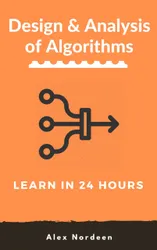Table Of Content
Chapter 1: What is DBMS (Database Management System)? Application, Types & Example
What is a Database?
What is DBMS?
Example of a DBMS
History of DBMS
Characteristics of Database Management System
DBMS vs. Flat File
Users in a DBMS environment
Popular DBMS Software
Application of DBMS
Types of DBMS
Advantages of DBMS
Disadvantage of DBMS
When not to use a DBMS system?
Chapter 2: Database Architecture in DBMS: 1-Tier, 2-Tier and 3-Tier
What is Database Architecture?
Types of DBMS Architecture
1-Tier Architecture
2-Tier Architecture
3-Tier Architecture
Chapter 3: DBMS Schemas: Internal, Conceptual, External
Internal Level/Schema
Conceptual Schema/Level
External Schema/Level
Goal of 3 level/schema of Database
Advantages Database Schema
Disadvantages Database Schema
Chapter 4: Relational Data Model in DBMS: Concepts, Constraints, Example
What is Relational Model?
Relational Model Concepts
Relational Integrity Constraints
Operations in Relational Model
Best Practices for creating a Relational Model
Advantages of using Relational Model
Disadvantages of using Relational Model
Chapter 5: ER Diagram: Entity Relationship Diagram Model | DBMS Example
What is ER Diagram?
What is ER Model?
History of ER models
Why use ER Diagrams?
Facts about ER Diagram Model
ER Diagrams Symbols & Notations
Components of the ER Diagram
WHAT IS ENTITY?
Relationship
Weak Entities
Attributes
Cardinality
How to Create an Entity Relationship Diagram (ERD)
Best Practices for Developing Effective ER Diagrams
Chapter 6: Relational Algebra in DBMS: Operations with Examples
Chapter 7: DBMS Transaction Management: What are ACID Properties?
Chapter 8: DBMS Concurrency Control: Timestamp & Lock-Based Protocols
Chapter 9: DBMS Keys: Candidate, Super, Primary, Foreign Key Types with Example
Chapter 10: Functional Dependency in DBMS: What is, Types and Examples
Chapter 11: Data Independence in DBMS: Physical & Logical with Examples
Chapter 12: Hashing in DBMS: Static & Dynamic with Examples
Chapter 13: SQL Commands: DML, DDL, DCL, TCL, DQL with Query Example
Chapter 14: DBMS Joins: Inner, Left Outer, THETA Types of Join Operations
Chapter 15: Indexing in DBMS: What is, Types of Indexes with EXAMPLES
Chapter 16: DBMS vs RDBMS: Difference between DBMS and RDBMS
Chapter 17: File System vs DBMS: Key Differences
Chapter 18: SQL vs NoSQL: What’s the Difference Between SQL and NoSQL
Chapter 19: Clustered vs Non-clustered Index: Key Differences with Example
Chapter 20: Primary Key vs Foreign Key: What’s the Difference?
Chapter 21: Primary Key vs Unique Key: What’s the Difference?
Chapter 22: Row vs Column: What’s the Difference?
Chapter 23: Row vs Column: What’s the Difference?











